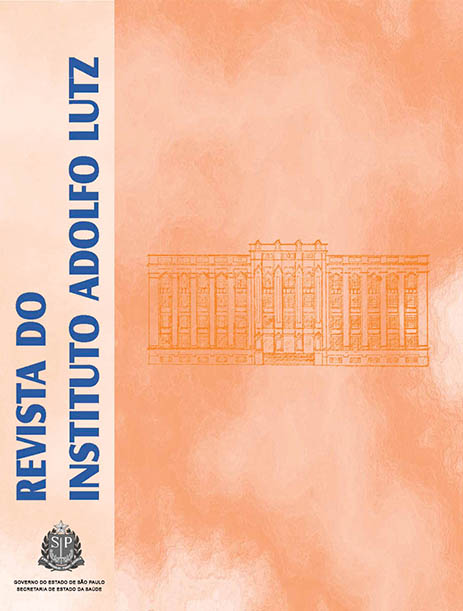Abstract
Rabies is an anthropozoonosis caused by rabies virus of Lyssavirus genre, Rhabdoviridae family, which can infect all mammals, and , although it has being known since antiquity, it still remains a public health problem in developing countries. This study aimed at characterizing and evaluating the aggressions by animals and the human anti-rabies health assistance in the city of Garanhuns, PE, during the period from 1999 to 2006. For this purpose, the variables collected from the Disease Information and Surveillance System (SINAN) were analyzed. This survey evidenced the prevalence of aggression caused by dogs in male individuals aged from one and twenty years old, during leisure time, and the majority of them had one unique, deep and located injuries in hands and feet. Increase in the number of notifications occurred during the studied period, and the treatment was indicated to 580 patients, but 32 of them gave up. Considering the observed data, the local health managers should promote training and refresher courses to instruct the involved technicians over the issues related to the accurate data collection, the precise questionnaire filling in, the suitable patients follow-up, and to be skilled to orientate the patients to follow the complete anti-rabies prophylactic treatment procedure.References
1. Instituto Pasteur. Educação e promoção da saúde no programa de controle da raiva. 2. ed. São Paulo; 2000 (Manual do Instituto Pasteur, n. 5).
2. Belotto AJ. Situação epidemiológica da raiva: panorama mundial. Simpósio Internacional Programa de Treinamento controle de zoonoses e as interações homem-animal; 2001 [anais SP].
3. Fortes FS, Wouk AFPF, Biondo AW, Barros CC. Acidentes por mordeduras de cães e gatos no município de Pinhais, Brasil de 2002 a 2005. Rev Arc Vet Sci. 2007;12(2):16-24.
4. Brasil. Ministério da Saúde. Guia de Vigilância Epidemiológica. 5a. ed. Brasília: Ministério da Saúde; 2002. v. 2.
5. Batista HB, Carvalho R, Franco AC, Roehe PM. Raiva: uma breve revisão. Rev Acta Sci Vet. 2007;35(2):125-44.
6. Instituto Pasteur. Controle da população de animais de estimação. 2a. ed. São Paulo; 2000 (Manual do Instituto Pasteur n. 6).7. Brasil. Ministério da Saúde. Indicadores de morbidade e fatores de risco. D.1.
7 Incidência da raiva humana. Brasília, DF, 2006. [disponível em: http://portal.saude.gov.br/portal/saude].
8. Brasil. Ministério da Saúde. Raiva: Situação da doença no Brasil. Brasília: Ministério da Saúde; 2004.
9. Schineider MC, Souza LM, Moraes NB, Diaz RC. Controle da raiva no Brasil de 1980 a 1990. Rev Saúde Publica. 1996;30(2):196-203.
10. Rigo L, Honer MR. Análise da profilaxia da raiva humana em Campo Grande, Mato Grosso do Sul, Brasil, 2002. Cad Saúde Publica. 2005;21(6):1939-45.
11. Instituto Pasteur. Profilaxia da raiva humana. 2a. ed. São Paulo; 2000 (Manual do Instituto Pasteur n. 4).
12. Laguardia J, Domingues CMA, Carvalho C, Lauerman CR, Macario E, Glatt R. Sistemas de Informação de Agravos de Notificação (Sinan): Desafios no desenvolvimento de um sistema de informação em saúde. Rev Epidemiol Serv Saúde. 2003;13(3):135-47.
13. Rolim RLP, Lopes FMR, Navarro IT. Aspectos da vigilância epidemiológica da raiva no município de Jacarezinho, Paraná, Brasil. Rev Ciênc Agrár. 2006;27(2):271-80.
14. Filgueira AC, Cardoso MD, Ferreira LOC. Profilaxia antirrábica humana: uma análise exploratória dos atendimentos ocorridos em Salgueiro-PE, no ano de 2007. Rev Epidemiol Serv Saúde. 2011;20(2):233-44.

This work is licensed under a Creative Commons Attribution 4.0 International License.
Copyright (c) 2012 Instituto Adolfo Lutz Journal
